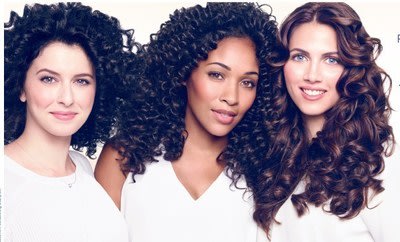Textures and properties make up hair, not races. Solicitation and sale of ethnic products is a marketing tactic used to get certain people to buy certain products. If you have hair that craves moisture, try moisture restoring and conditioning shampoos and products. Products in the ethnic aisle, many of us with curly hair can’t even use because they have a lot of grease and sometime inferior ingredients. There are many new brands making products that really do help our moisture craving hair, like shea moisture, coconut oils and other Ayurvedic products that add moisture to hair and skin. They don’t say or put a black name or face on the package, only that it is for curly hair.
The First Difference is their Target
You will find that commercial hair shampoos and conditioners are made in the form of creams or gels. They are made up of emulsions or gels, water and detergent base with other added ingredients. The first difference is their target. Hair is actually a modified type of skin. The main difference between hair and skin is that skin is basically a living organ that replaces its outermost layer . On the other hand, hair is actually dead material obtained from several living cells deep in the skin surface.
Our hair care is much more complex than body care and will differ according to one’s hair type and depending on processes applied to hair. Hair is a manifestation of human diversity. Please note; there are three basic ethnic hair groups: Caucasian, Asian and Black Afro/Caribbean. The structure of hair varies from completely straight to tight wiry curls and from fine and flyaway to coarse and frizzy. There is also widely different behavior patterns. When you shop for shampoos you must find one that will not dry out the hair like so many shampoos do.
Hair Care is not Based on Skin Color
Use products that work for your hair. For instance if your hair is dry you should use a moisturizing shampoo. Base your product decisions on the ingredients not the packaging. It doesn’t matter if it’s marketed towards black people or white people.
Hair products are to be used according to the texture, elasticity, porosity,strength, and needs of the hair and individual.
Certain cultures may use some specific products more than other cultures. Women of color, native American women, Chinese, Japanese, Portuguese, Hispanic, Asian, Pakistani, New Zealand, or Greek women all have their preferences for certain products. These are the products used to attain the look and feel they desire. However, these products are also used cross culturally as well.
Shampoos have a pH of between 4 and 6. Acidic shampoos are the most common type of shampoos; they do not contain soap and their pH is closer to the natural pH of hair. Due to their pH, acidic shampoos do not swell the hair shaft or strip the natural oils. The scales on a hair follicle lay flat at a slightly acidic pH, making the hair feel smooth and look shiny. Citric acid is often used to adjust the pH down to 5.5. It is a fairly weak acid, which makes the adjustment easier. It also has a small amount of preservative action.
There are some specialized shampoos such as anti-dandruff, natural, baby and animal shampoo. Anti-dandruff shampoo contains fungicides such as Ketoconazole, Zinc Pyrithione and Selenium sulfide.



